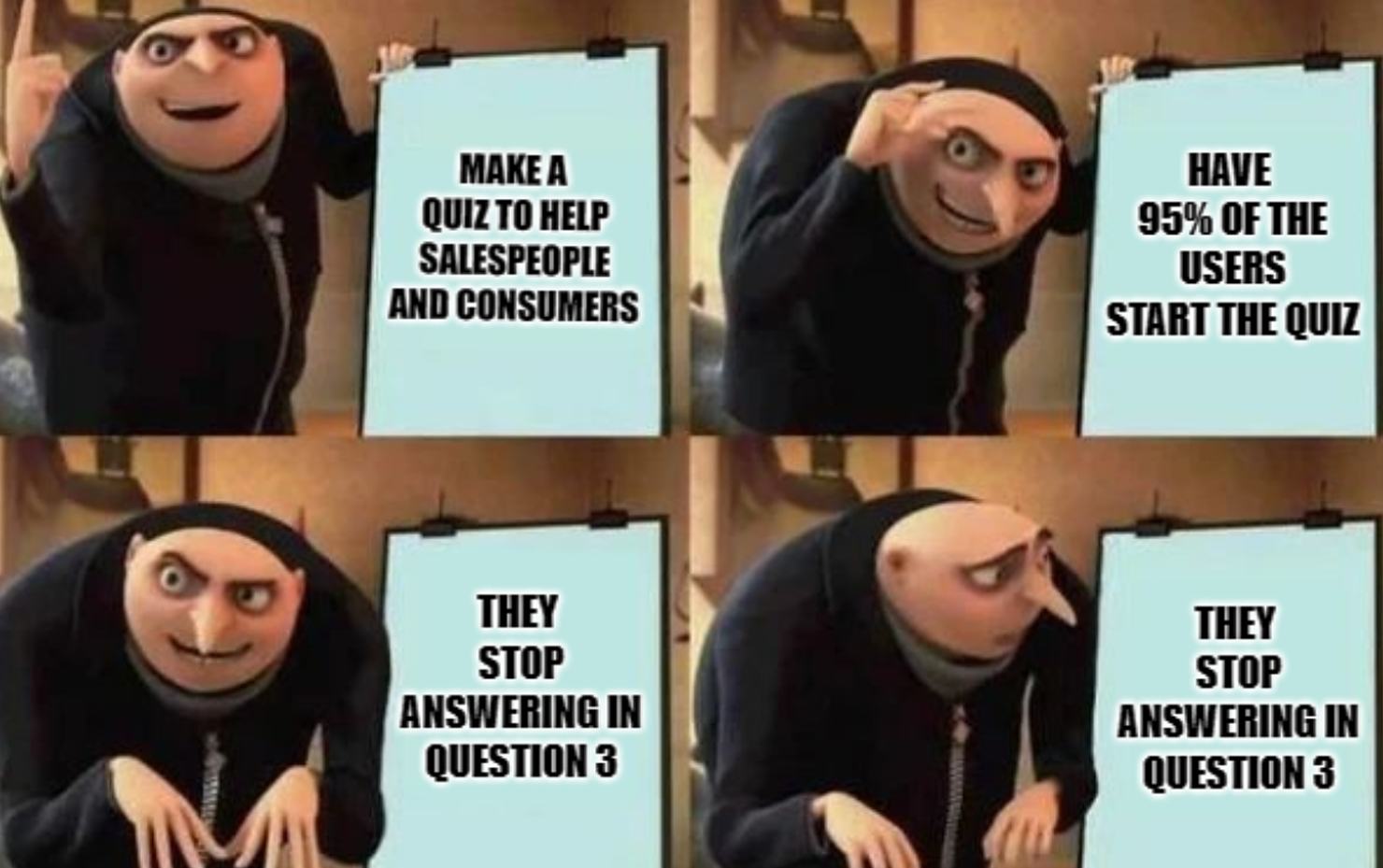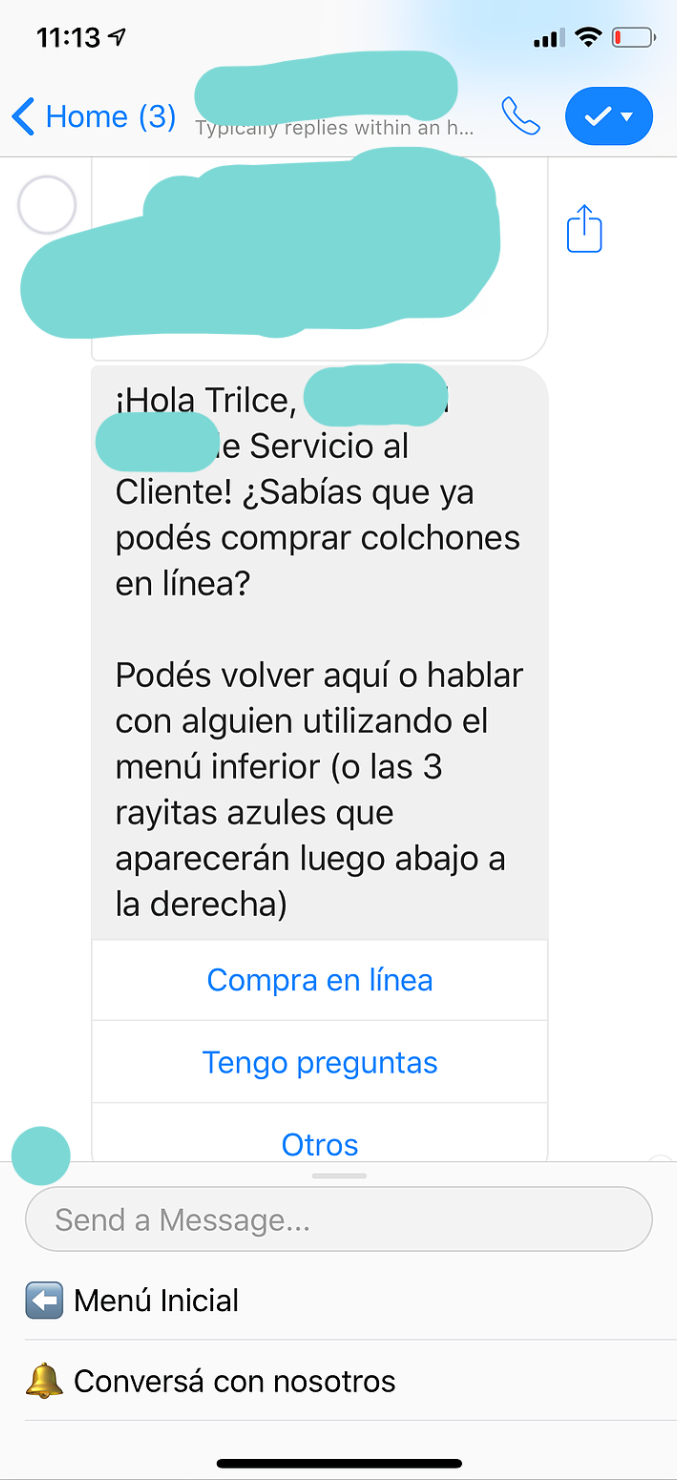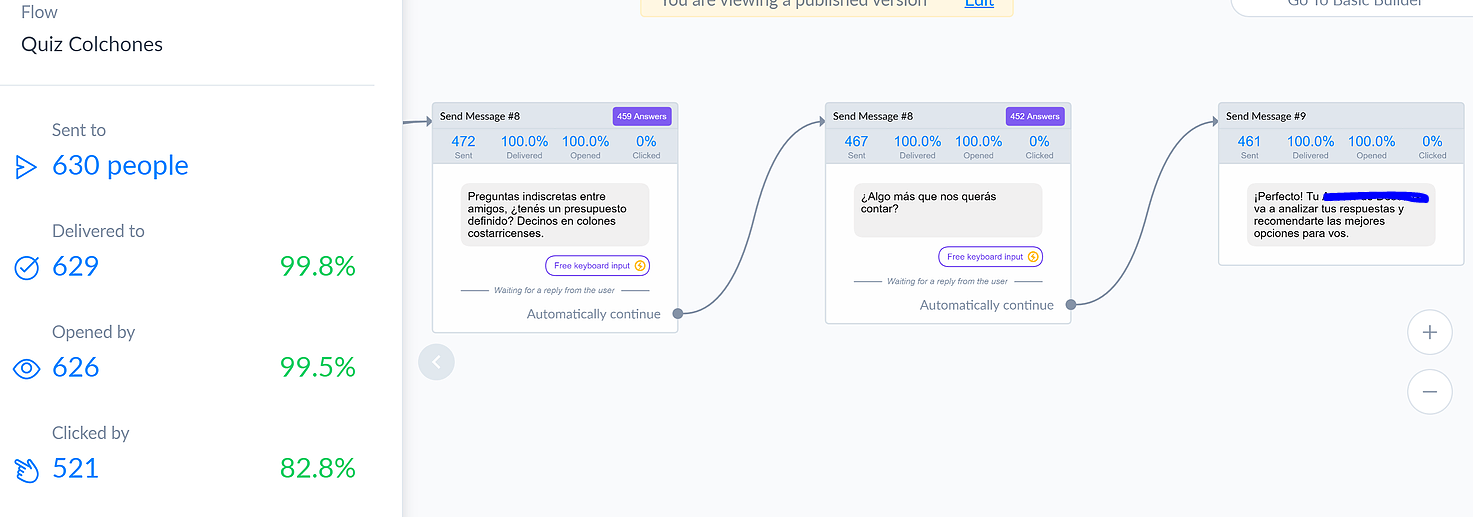We spend hours, if not days, planning and developing, being careful architects of automated conversations with a single goal in mind: to efficiently communicate.
How can you, the superb chatbot developer you already are, foresee the exact reactions your customers are going to have in order to increase their response rate by a million? (Well, not a million, but at least 50 percent.)
With some testing, we discovered how to go from a 30% chatbot response rate to 90% by applying neuromarketing. Learn the exact tools needed and how to apply them, and you’ll see an increase in your response rate too.
Case Study: The Mattress Company
A year ago, The Mattress Company, a business based in Costa Rica with over 115 years of experience, faced a new challenge: Consumers no longer wanted to visit the stores. As the market grew and other brands emerged, the average customer decided to check for prices through Facebook Messenger before purchasing.
The problem is that most people don’t know how to properly choose a mattress, so how could a digital team recommend the perfect product? My solution: Create a quiz for the existing chatbot to help customers find their perfect fit.
First tool: Stop thinking in bot terms. Start thinking in human terms.

As simple as this flow may look, without any conditions nor tags, it carries a heavy punch.
Whenever we’re developing an automated conversation, there should always be two people on our minds: the one who receives the message, and those who read the responses. This means we need to investigate a little bit and get involved, not just plotting over what our contact told us. By not investigating we doom our bots to fail. That’s why this baby doesn’t have any cool stuff on it, the people in the back-end had no technical knowledge and them using Facebook was already enough of a challenge. Plus they gave a personal 1-1 response according to those answers.
Ask yourself these basic three questions:
1. What is the end goal?
My end goal was to provide the customer with a mattress recommendation that fits his or her specific needs, providing them with facts as to why that option was given.
2. What does the company need from its customers and what are their pains?
Well, our pain, singular, is that people never know what they need. Full size, stiff bed. Ummm… You want thingamabobs? I got twenty!
The experts, or Sleep Advisers as we call them, need to know the size of the bed, the weight of the person, if they get too hot at night, how much money they’re willing to spend, and medical requirements. In. That. Order.
3. What are the questions usually asked by customers and what are their pains?
Is transport included? Are there any payment options? Why is it so expensive? They never ask about components, they don’t care about the fabric or fillings. They want to know that this specific option will get rid of that pesky lower back pain and it fits their budget perfectly.
Their main pain is they don’t want to answer the super-private questions the Sleep Adviser asks.
Once you’ve answered these three things, let them sit in your brain for a bit until they become one. Then ask yourself one last thing: How can I answer the customer’s questions in a way that provides the company with valuable data? Not an easy feat.
Our way was with a simple quiz. And that didn’t go well. They stopped answering once we asked for their weight.

Second tool: Turn to your trusty Obi-Wan Kenobi (it’s your only hope): NEUROMARKETING!
Unfortunately, I did not know I would be writing a blog about our first failure, so I never took any screenshots of it. But let me tell you, it was a mess. I didn’t take into consideration the fact that just as customers don’t want to tell Sleep Advisers how much they weigh in person, they don’t want to do it while chatting either.
“Hey, I just met you, and this is crazy, but what’s your weight hun? And let’s talk money.”
Not a good plan at all!
So here is where psychology came into play. Society is a devious maid constantly judging, and sharing private information is an exercise done only with people we trust, if not, we either lie or avoid answering. You can read a short article about why customers lie on surveys.
People lie to other people.

Before: ¡Hey first name! I’m your Sleep Adviser. Did you know”Insert current discount or marketing pitch here”?
After: displayed in image: ¡Hey first name! I’m XX, the customer support xxxxxxxxx. Did you know”Insert current discount or marketing pitch here”? You can come back here or talk to a person by using the menu down at the bottom.
Boom. That was it.
By simply letting people know they were not talking to an actual human being, relaxation ensued, and answers came running in.
From that moment on, the third question (which was then moved to number 4) went from a 30% response rate to a 95.5% response rate!
“Do you sleep alone or with a partner? What size bed are you looking for? Do you get too hot at night?” Simple questions to get your customer started. And then: “What’s your weight? Tell us in kilograms!” 495 messages sent. 475 messages answered. Isn’t that neat? They tell JJ cause JJ won’t judge! JJ does not have a body nor does he care if you’re on a diet.

The end results: 630 people received the quiz and 521 actually started — it which is a fantastic number.
Look at that first message on the left, that one says “Hey, between us friends, have you set a budget?” Everyone answered! Everyone told JJ how much money they were willing to spend. And then the cherry on top: “Anything else you wanna tell us?” Make them feel special, make your users feel unique and heard.
But how many people actually finished our quiz? We had 461 people get to that last stage, the magical bot-to-human hand-off. That’s an 88.5% response!
They went through the funnel and emerged victoriously, and now, customer support is getting amazing data they can use to tell this person “Hey, so according to your answers, the product you need is this one, and may I recommend a pillow for your neck pain?”
So, you too can defeat the universe and achieve percentual happiness just by asking yourself, “WWID? What would I do?” What would you do, fellow bot maker, if you were the customer receiving the message or the customer support person reading the answer? How would your message affect you in both cases?
Ready to grow your business? Get started today.
About the Author
Trilce Jirón, founder of The Bot Shop Costa Rica, designed what her customers have come to know as Interdepartmental Marketing. By providing communication channels that include both the client’s staff and top tier managers, and uniting graphic design, marketing, sales, and customer support under one umbrella, this three-year-old agency can brag about its 100% retention rate. But more importantly, they have a really cool piggy bank called Frank that performs miracles in exchange for coins.












![[Case Study] How The Mattress Company Went From a 30% Bot Response Rate to 90%](/blog/_next/image/?url=https%3A%2F%2Fmanychat.com%2Fblog%2Fwp-content%2Fuploads%2F2019%2F10%2Fcase-study-how-the-mattress-company-went-from-a-30-bot-response-rate-to-90.jpg&w=3840&q=100)